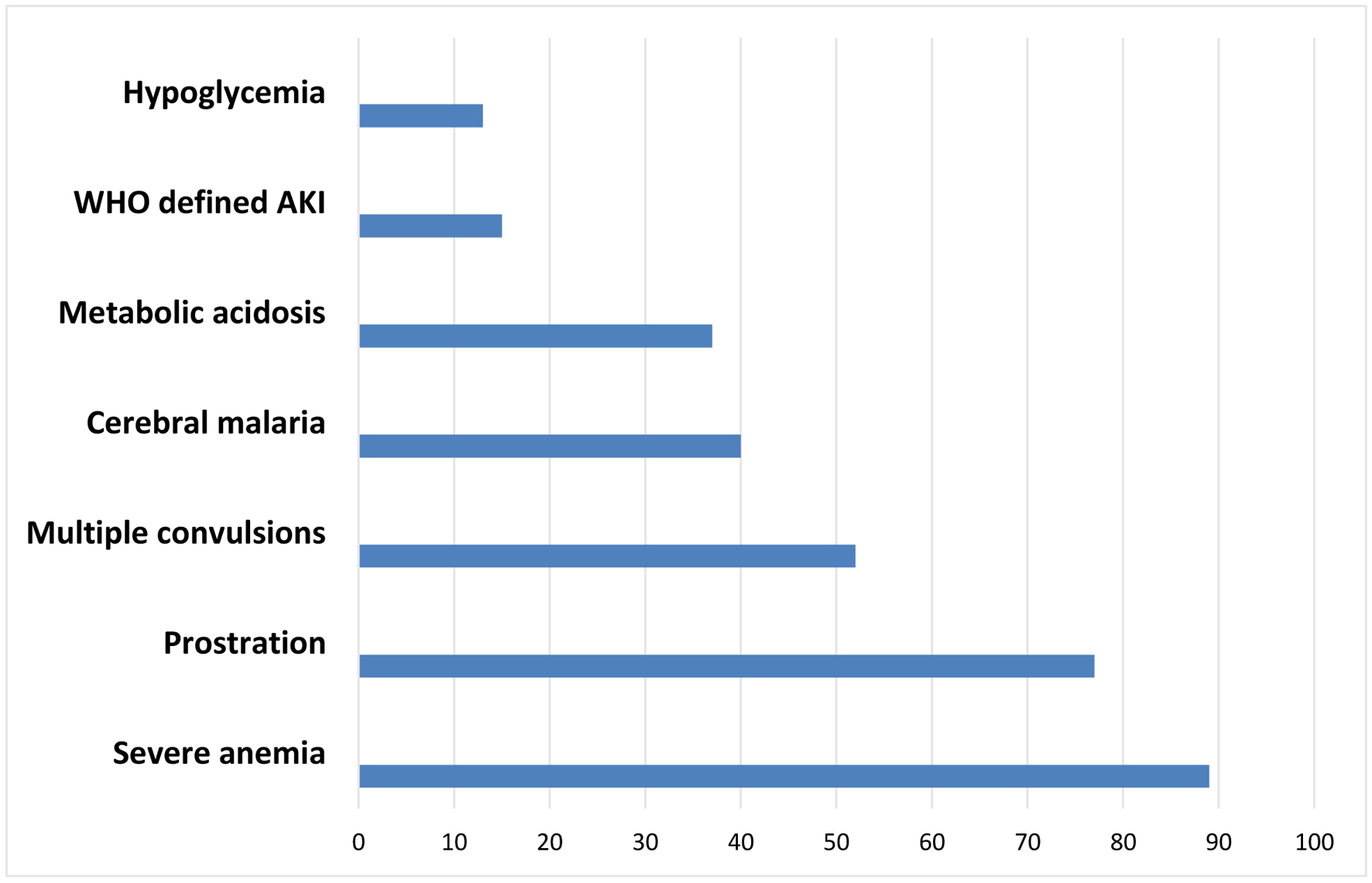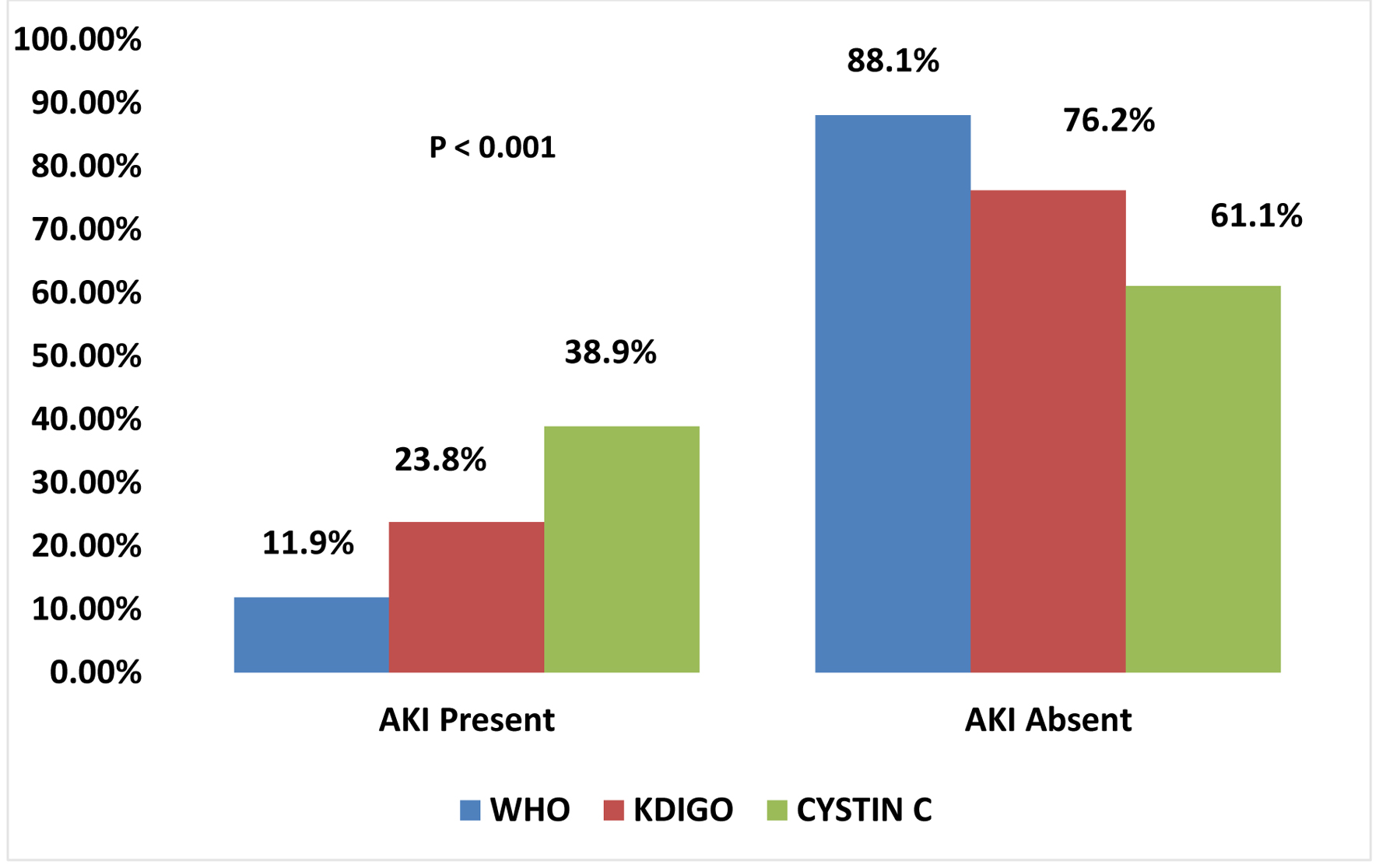
Figure 1. Bar chart showing the features of severe malaria found in the study population.
| World Journal of Nephrology and Urology, ISSN 1927-1239 print, 1927-1247 online, Open Access |
| Article copyright, the authors; Journal compilation copyright, World J Nephrol Urol and Elmer Press Inc |
| Journal website https://www.wjnu.org |
Original Article
Volume 13, Number 1, July 2024, pages 19-25
Serum Cystatin C as an Index of Early Detection of Acute Kidney Injury in Children With Severe Malaria
Figures


Tables
| Variable | Frequency (N = 126) | Percentages |
|---|---|---|
| Age (years) | ||
| < 5 | 79 | 62.7 |
| > 5 | 47 | 37.3 |
| Sex | ||
| Male | 70 | 55.6 |
| Female | 56 | 44.4 |
| Parent ethnicity | ||
| Yoruba | 87 | 69.0 |
| Ibo | 15 | 11.9 |
| Hausa | 12 | 9.5 |
| Other | 12 | 9.5 |
| Pre-referral treatment | ||
| Herbal | 96 | 76.2 |
| Non-herbal | 30 | 23.8 |
| Socio-economic class | ||
| Class I | 0 | 0 |
| Class II | 12 | 9.5 |
| Class III | 32 | 25.4 |
| Class IV | 52 | 41.3 |
| Class V | 30 | 23.8 |
| Mean | Median | Standard deviation | Minimum | Maximum | |
|---|---|---|---|---|---|
| Overall | 0.74 | 0.58 | 0.59 | 0.46 | 3.20 |
| Male | 0.79 | 0.59 | 0.69 | 0.60 | 3.20 |
| Female | 0.68 | 0.58 | 0.42 | 0.60 | 1.89 |
| AKI present | AKI absent | |
|---|---|---|
| AKI: acute kidney injury; KDIGO: Kidney Disease: Improving Global Outcomes; WHO: World Health Organization. | ||
| KDIGO | ||
| Cystatin C | ||
| Present | 24 (48.9) | 25 (51.0) |
| Absent | 6 (7.8) | 71 (92.2) |
| Total | 30 (23.8) | 96 (76.2) |
| WHO criteria | ||
| Present | 15 (100.0) | 0 (0.0) |
| Absent | 15 (13.5) | 96 (86.5) |
| Total | 30 (23.8) | 96 (76.2) |
| WHO criteria | ||
| Cystatin C | ||
| Present | 15 (30.6) | 34 (69.4) |
| Absent | 0 (0.0) | 77 (100.0) |
| Total | 15 (11.9) | 111 (88.1) |